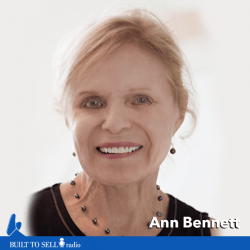About this episode
From an agile SMB to the big, corporate environment of one of the Big Four auditors – this business owner learned negotiating a price is only half the battle.
Can a small, 30 employee team make a successful transition to the corporate environment of one of the Big Four auditors (and stay on-board)?
Ann Bennett was founder of Applied Information Services (AIS) – a first-of-its-kind, PC-based software company that processed K-1s (internal tax forms given to investors in partnerships). AIS was not an accounting firm, giving them a competitive advantage to powerhouses like PricewaterhouseCoopers –whose K-1 department was plateauing, still operating on traditional mainframes.
PwC realized they needed to evolve and offer the flexibility and responsiveness that only AIS’ software provided – so they approached Bennett. The two parties would eventually settle on a price (only after Bennett went back to ask for one million more), but it was the price she would later pay that has her reflecting on this story 20 years later.
In this episode, you’ll learn:
- What a business owner can expect post-exit
- Why you need to look at your employee as your assets
- One surprising thing that can make a sale easier for your team to digest
- The one thing you should do differently (Hint: it relates to Ann’s contract post sale)
- The definition of a strategic acquirer and how to find yours
AIS offered an agile solution over its cumbersome competition. This kind of Monopoly Control makes you stand out to potential acquirers—even when they’re those same competitors. To find out how your Monopoly Control is affecting your sellability potential, get your Value Builder Score now and improve your company value.
Check out our article on Secrets To Attracting Strategic Acquirers.

About Our Guest
Ann Bennett has 25+ years of hands on experience in building, leading and advisor corporations through strategic execution of funding, operational optimization and exit planning activities. She focuses on robust financial governance embedding new technology across an organization. Her experience includes founding and developing a high-tech company selling it after 15 years returning over 1000% to the investors.


